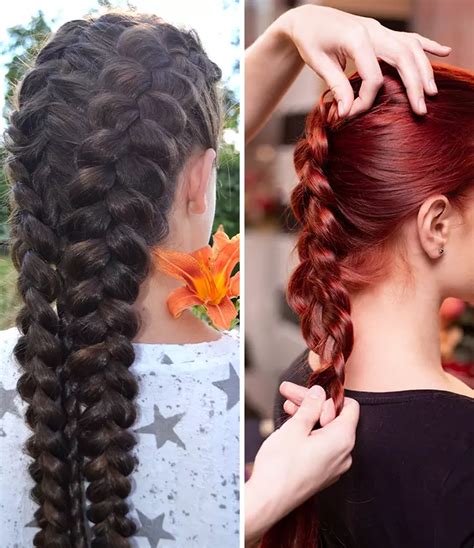Introduction
Braids are a timeless and versatile hairstyle that can elevate any look. Among the most popular braiding techniques are French and Dutch braids, both known for their intricate beauty. While they share some similarities, they also boast distinct characteristics that set them apart. Let’s delve into the nuances of these two braiding methods and explore their unique charm.

9 Key Differences Between French and Dutch Braids
- Weaving Direction: French braids tuck strands over the center strand, while Dutch braids tuck strands under the center strand.
- Volume and Texture: Dutch braids create a raised, three-dimensional effect, while French braids lie flatter and have a more intricate pattern.
- Tightness: French braids are typically tighter, while Dutch braids are looser and have more volume.
- Face-Framing: French braids can incorporate strands from the sides to frame the face, while Dutch braids do not.
- Start Position: French braids begin at the crown of the head, while Dutch braids start at the nape of the neck.
- Scalp Coverage: French braids cover more of the scalp, while Dutch braids expose more of it.
- Complexity: French braids are generally easier to master than Dutch braids.
- Variations: There are more variations of Dutch braids, such as fishtail, waterfall, and milkmaid braids.
- Suitability: French braids are suitable for long or medium hair, while Dutch braids can also be worn with shorter hair.
12 Gorgeous Braiding Styles
French Braids:
- Classic French Braid
- Dutch Braid Crown
- Side-Swept French Braid
- French Braid Updo
- French Braid Bun
- Half-Up French Braid
Dutch Braids:
- Double Dutch Braid
- Fishtail Dutch Braid
- Waterfall Dutch Braid
- Milkmaid Dutch Braid
- Boxer Braids
- Upside-Down Dutch Braid
Tips and Tricks
- Section your hair: Divide your hair into equal sections for a cleaner and more defined braid.
- Keep the tension even: Maintain consistent tension throughout the braiding process to prevent unevenness.
- Add products: Use hairspray or mousse to hold the braids in place and minimize frizz.
- Practice makes perfect: Don’t get discouraged if your first attempts are not flawless. With practice, you’ll master the technique and create stunning braids.
Step-by-Step Guide to a Basic French Braid
- Section off a small portion of hair at the crown of your head.
- Divide the section into three equal strands.
- Cross the right strand over the center strand.
- Cross the left strand over the new center strand.
- Grasp a small section of hair from the right side and add it to the right strand.
- Cross the modified right strand over the center strand.
- Add a section of hair from the left side to the left strand.
- Cross the modified left strand over the center strand.
- Repeat steps 5-8 until all hair is braided.
- Secure the braid with an elastic band.
Pros and Cons
French Braids:
Pros:
- Classic and elegant look
- Versatile for different hair types
- Easy to master
Cons:
- Can be tight and uncomfortable
- May pull on hair and cause breakage
- Less volume and texture
Dutch Braids:
Pros:
- Raised and voluminous effect
- Can be worn with shorter hair
- More variations available
Cons:
- More challenging to master
- Can look messy if not done properly
- May not be suitable for all face shapes
Innovative Applications
Beyond Fashion:
- Hair extensions: Create seamless and natural-looking hair extensions by braiding artificial strands into your own hair.
- Medical devices: Braided structures can be used to deliver drugs or monitor brain activity.
- Rope making: Dutch braids can be used as a method of creating strong and durable ropes.
- Architectural inspiration: The geometric patterns of braids can be found in various architectural designs.
Conclusion
French and Dutch braids are both magnificent braiding techniques that offer a range of styles to complement different looks. While they share some fundamental similarities, their unique characteristics set them apart, making each method suitable for specific hair types and occasions. Whether you opt for the classic elegance of a French braid or the voluminous beauty of a Dutch braid, mastering these techniques will elevate your hairstyling repertoire. Embrace the versatility of braids and unleash your creativity to create stunning looks that turn heads.
